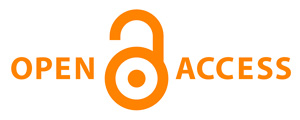COMPARATIVE ANALYSIS OF CLINICAL EFFECTIVENESS OF REHABILITATION PROGRAMS FOR FUNCTIONAL RESTORATION OF THE UPPER LIMB IN PATIENTS WITH STROKE
DOI:
https://doi.org/10.31891/pcs.2025.1(1).67Keywords:
physical therapy, constraint-induced movement therapy, neuromuscular electrical stimulation, rehabilitation, stroke, upper limbAbstract
Degenerative changes in the lumbar spine are a common reason for rehabilitation interventions. Rehabilitation is an important part of a conservative treatment program for nonspecific back pain. Due to its analgesic effect, it reduces the number of medications, improves functional capacity, and is aimed at preventing relapses. The aim of the study was to evaluate the effectiveness of rehabilitation methods used in patients with degenerative changes in the lumbar spine. The study was conducted in two groups of patients. In the first group, hardware physiotherapy, physical therapy, and water exercises were used, and in the second group, hardware physiotherapy, physical therapy, spinal traction, and water exercises were used. The effectiveness of complex therapy was assessed using the Oswestry questionnaire, the VAS scale, and functional tests: the Schober test, the Laseg test, and the Biering-Sorensen test. There was a decrease in pain in both groups (p<0.001). The decrease in the disability index was approximately 10 points in both groups. Mobility of the lumbar spine improved by an average of 1.78 cm in group II and 1.61 cm in group I. In both groups, there was a decrease in the number of patients with neurological manifestations. The obtained results of the selected functional tests did not depend on the nature of the physiotherapy treatment. The largest difference between the groups in favor of the first group was recorded in the Lassegue test, but it was not statistically significant. There were no significant differences in the results between the groups, except for a more pronounced analgesic effect of therapy in group I (p=0.032). Physiotherapeutic methods have comparable efficacy in improving the condition of patients with degenerative changes in the lumbar spine. As a result of physiotherapeutic intervention, disability and pain syndrome are reduced. The results of the selected functional tests did not depend on the type of rehabilitation intervention.
References
Patel MD, Tilling K, Lawrence E, Rudd AG, Wolfe CD, McKevitt C. Relationships between long-term stroke disability, handicap and health-related quality of life. Age Ageing. 2006;35:273-279.
Nichols-Larsen DS, Clark PC, Zeringue A, Greenspan A, Blanton S. Factors influencing stroke survivors’ quality of life during subacute recovery. Stroke. 2005;36:1480-1484.
Lai SM, Studenski S, Duncan PW, Perera S. Persisting consequences of stroke measured by the stroke impact scale. Stroke. 2002;33:1840-1844.
Morris DM, Taub E, Mark VW. Constraint-induced movement therapy: characterizing the intervention protocol. Eura Medicophys. 2006;42:257-268.
Sirtori V, Corbetta D, Moja L, Gatti R. Constraint-induced movement therapy for upper extremities in stroke patients. Cochrane Database Syst Rev. 2009;(CD004433).
Young JA, Tolentino M. Neuroplasticity and its applications for rehabilitation. Am J Ther. 2011;18:70-80.
Liepert J. Evidence-based therapies for arm dysfunction. Curr Opin Neurol. 2010;23:678-682.
Wolf SL, Winstein CJ, Miller JP, et al. Effect of constraint-induced movement therapy on arm function 3 to 9 months after stroke: The EXCITE randomized clinical trial. JAMA. 2006;296:2095-2104.
Morris DM, Uswatte G, Crago JE, Cook EW 3rd, Taub E. The reliability of the Wolf Motor Function Test for assessing arm function after stroke. Arch Phys Med Rehabil. 2001;82:750-755.
Uswatte G, Taub E, Morris D, Light K, Thompson PA. The motor activity log-28: Assessing daily use of the hemiparetic arm after stroke. Neurology. 2006;67:1189-1194.
Van de Winckel A, Feys H, van der Knaap S, et al. Can quality of movement be measured? Rasch analysis and inter-rater reliability of the Motor Evaluation Scale for Arm in Stroke Patients (MESUPES). Clin Rehabil. 2006;20:871-884.
Kidd D, Stewart G, Baldry J, et al. The functional independence measure: A comparative validity and reliability study. Disabil Rehabil. 1995;17:10-14.
Taub E, Uswatte G, King DK, Morris D, Crago JE, Chatterjee A. A placebo-controlled trial of constraint-induced movement therapy for arm after stroke. Stroke. 2006;37:1045-1049.
Lin KC, Wu CY, Liu JS, Chen YT, Hsu CJ. Constraint-induced therapy versus dose-matched control intervention to improve motor ability, basic/extended daily functions, and quality of life in stroke. Neurorehabil Neural Repair. 2009;23:160-165.
Langan J, van Donkelaar P. The influence of hand dominance on the response to a constraint-induced therapy program following stroke. Neurorehabil Neural Repair. 2008;22:298-304.
Dromerick AW, Lang CE, Birkenmeier RL, et al. Very early constraint-induced movement during stroke rehabilitation (VECTORS): A single-center RCT. Neurology. 2009;73:195-201.
Wolf SL, Newton H, Maddy D, et al. The EXCITE trial: Relationship of intensity of constraint induced movement therapy to improvement in the wolf motor function test. Restor Neurol Neurosci. 2007;25:549-562.
Downloads
Published
How to Cite
Issue
Section
License
Copyright (c) 2025 Андрій ГОЛЯЧЕНКО, Юлія ГЛАДЬ, Микола МАЙСТРУК

This work is licensed under a Creative Commons Attribution 4.0 International License.





